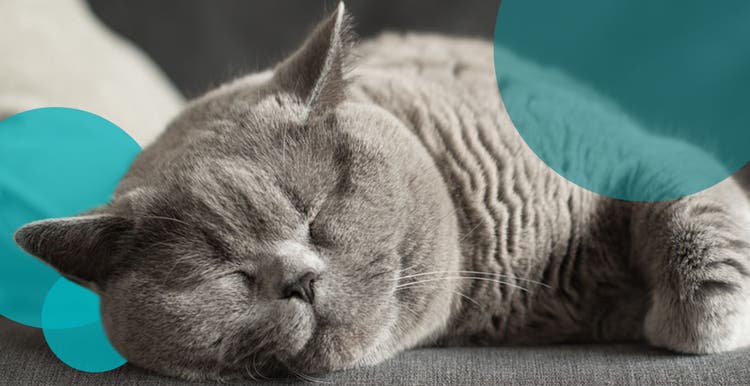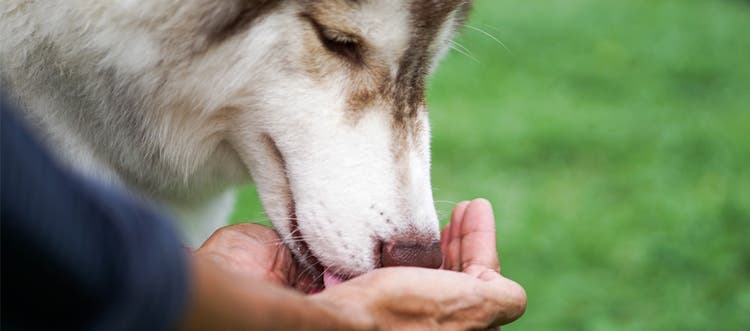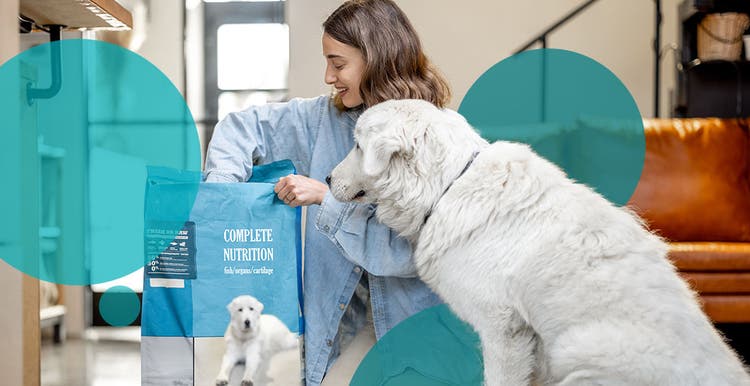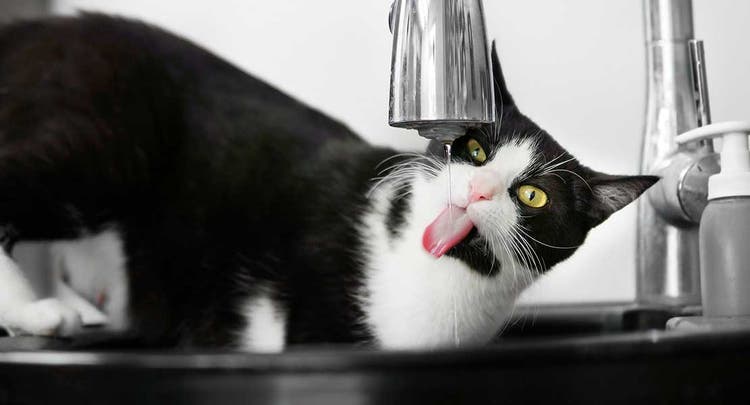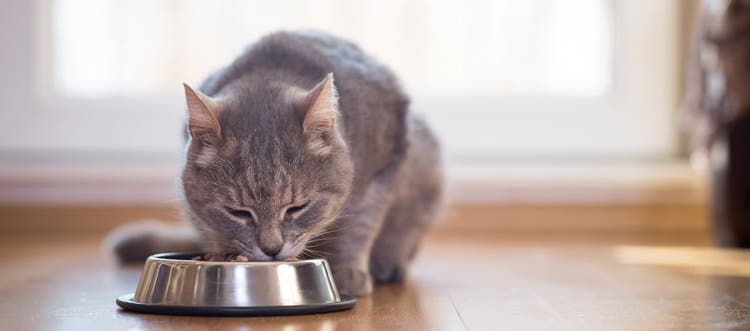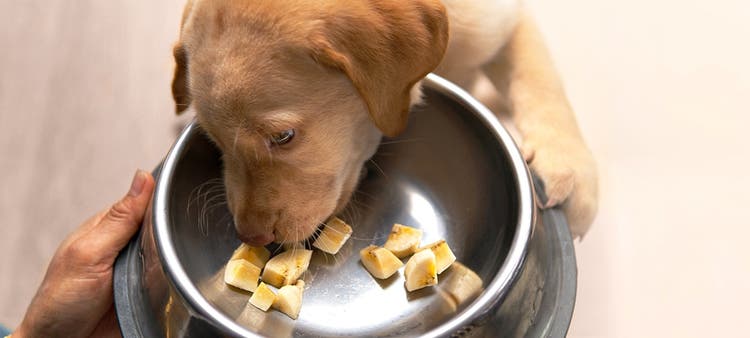What to do if your pet needs to lose a few pounds.
Part of helping your dog or cat lead a healthy life is managing their weight and exercise. But keeping their weight under control or within an optimal range can be challenging — especially with all the treats and specialty diets out there! If you suspect your cat or dog could lose a few (or more) pounds, take these simple steps first.
Is My Dog or Cat Overweight?
A visit to your vet will give you the precise information on your pet's ideal weight and whether your pet is in the recommended weight range for their breed. But to do an at-home, approximate weight assessment, look at your pet's waist and ribcage while standing directly over them. If their abdomen/waist area is as big or larger than the circumference of their ribcage, chances are that your pet is above their recommended weight. Other signs include:
- You can’t feel or see their ribs.
- Their belly or abdomen protrudes.
- They don’t have an hourglass-shaped figure.
For more signs your pet may be overweight, see our guide.
How Can I Help My Dog or Cat Lose or Manage Their Weight?
Here are some considerations you can try at home as you work toward a healthier dog or cat weight — and improve their overall wellness.
Measure Your Pet’s Food
Many loving pet owners don't realize the importance of measuring their pet's food during mealtime. But the reality is, depending on their level of exercise, your dog or cat only needs a certain amount of calories each day. And we all know that some of our pets will keep eating as much as we'll let them!
Steps to take:
- Consult the feeding instructions on the dog or cat food packaging and make sure you're feeding the recommended amount; many labels provide an amount per day, meaning that if you feed your pet multiple times a day, you'll need to divide up the recommended amount accordingly.
- Keep a measuring cup handy — don't just "guestimate"!
- If you're unsure whether you're feeding too much, check with your vet. They may also recommend putting your cat or dog on a food designed for weight loss.
Limit the Number of Treats You Give
There's nothing like the look on your pet's face when they beg for their favorite treat or snack. But try to resist — multiple treats throughout the day can rack up the calories.
Steps to take:
- Limit high-calorie or high-fat treats to special occasions, and only offer one.
- Swap high-calorie treats for lighter, healthier versions.
- Consider using frozen or fresh vegetables (recommended by your vet) as "treats." Many are safe for dogs, such as baby carrots, green beans and broccoli. (Never give your pet onions or garlic.)
Don’t Feed Your Pet Table Scraps
Many of us also treat our pets to the food on our plates, not realizing the heath concerns that can accompany this choice. Be careful feeding human food to dogs or cats; foods such as chocolate or grapes are toxic to pets.
Steps to take:
- With so many do's and don'ts regarding people food for pets, it's best to stick with food created and designed for your dog or cat and their needs.
- Check with your vet before making dietary changes, as they'll understand your pet's unique needs.
Mix up Your Pet's Movement
Help motivate your cat or dog to move more by incorporating a new toy, game of fetch or stair-running session into their exercise routine. It may mean a little more work for you, but it's worth it to help your dog or cat burn some calories.
Steps to take:
- Take longer walks with your canine companion to make a difference in their overall health and impact their weight loss. Most dogs should be able to handle a 30-minute walk twice a day. If your dog can't, start with two 15-minute walks a day and work up in five-minute increments. While there is no official amount of time or distance to follow, the goal is simply to increase your dog's activity level. Just take it slow — increase the duration and distance of your walks gradually, and pay attention to signs of fatigue, overheating or exhaustion, especially in older dogs.
- To up your cat's exercise regimen, provide them with cat trees to climb, toys to chase or items they can "hunt" around the house. Bonus points if you encourage them to go up and down the stairs! Aim for a 10-minute (or longer) play session in the morning and evening, when cats are most active.
If you're concerned about your pet's weight, consult your vet before changing your pet's diet or implementing a weight loss plan or new exercise routine. By making a few simple changes, adding some regular exercise to the mix and practicing self-discipline (for you and them), you can help your dog or cat shed those extra pounds and be at an optimal weight in no time.
References
- Is Your Pet at a Healthy Weight? (n.d.). Retrieved November 15, 2021, from https://www.banfield.com/Wellness-at-banfield/Diet-nutrition-obesity/healthy-pet-weights.
- How to Help Your Obese Pet. (n.d.). Retrieved November 15, 2021, from https://www.banfield.com/Wellness-at-banfield/Diet-nutrition-obesity/help-obese-dog-or-cat.
- Williams, K. (n.d.). Creating a Weight Reduction Plan for Cats. Retrieved May 31, 2020, from https://vcahospitals.com/know-your-pet/creating-a-weight-reduction-plan-for-cats.
- Williams, K. (n.d.). Creating a Weight Reduction Plan for Dogs. Retrieved May 31, 2020, from https://vcahospitals.com/know-your-pet/creating-a-weight-reduction-plan-for-dogs

